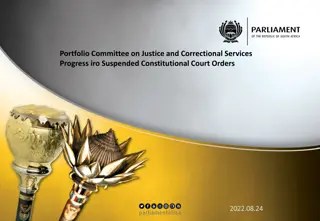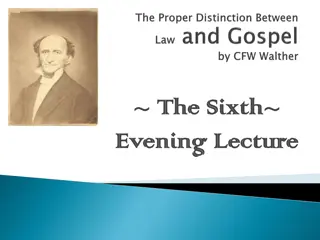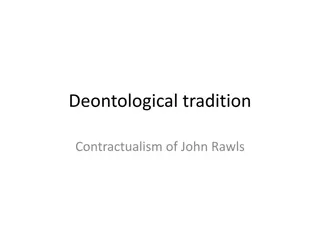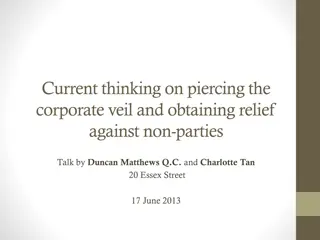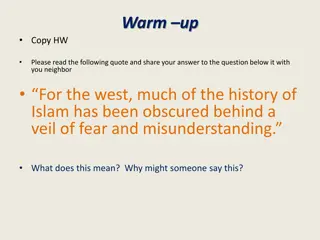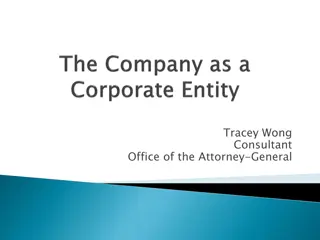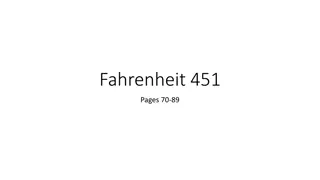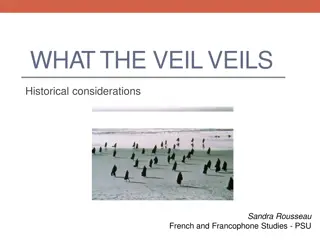Decision Making and Constitutional Rules Behind the Veil of Ignorance
In decision-making for collective actions, individuals behind a veil of ignorance need constitutional rules to govern future decisions. The choice of rules, the expected external costs, and decision-making costs play a crucial role in determining the optimal decision-making rule. By minimizing total costs (C+D), individuals can select the most suitable decision rule. This process is essential for areas such as religion, free speech, property rights, and constitutional modifications.
Download Presentation

Please find below an Image/Link to download the presentation.
The content on the website is provided AS IS for your information and personal use only. It may not be sold, licensed, or shared on other websites without obtaining consent from the author.If you encounter any issues during the download, it is possible that the publisher has removed the file from their server.
You are allowed to download the files provided on this website for personal or commercial use, subject to the condition that they are used lawfully. All files are the property of their respective owners.
The content on the website is provided AS IS for your information and personal use only. It may not be sold, licensed, or shared on other websites without obtaining consent from the author.
E N D
Presentation Transcript
In order to decide what actions should be decided collectively, free and rational individuals need to know the costs of government action but we can t know these costs before we know how government will be organized. In Chapter 6, B&T look at what constitutional rules,rules to govern future decisions, that free and rational individuals would adopt behind a veil of ignorance or at a constitutional moment. The language is due to John Rawls but the idea is the same as justice is blind.
Choice of the rules to govern the future game is by unanimity. Once again, this is partly an intellectual exercise to see what rules are just but the assumptions may also be roughly accurate at certain times and places, such as the US constitutional convention of 1789. Other constitutional moments may suffer precisely because the veil of ignorance was pierced. US constitutional rules certainly suffered because at the time of the constitutional convention a great exception to the veil of ignorance was that everyone knew their color and who was slave and free.
The coercive external costs are the expected costs of being in the minority having a collective decision go against one self. These costs are a function of the number of individuals who are required to be decisive. Expected external costs will be higher the lower the decision rule. Note that these are the costs of a rule that will govern many future choices. Expected External Costs (present value) Higher expected external costs when decision rule is less than unanimity C At unanimity, expected external costs are zero N Number of Individuals required to take collective action
Expected External Costs (present value) At unanimity, expected decision costs are very high Decision making costs are the costs of discussion, organization, bargaining etc. Decision making costs rise with the decision rule. Why? Holdouts and transaction costs. D Lower expected decision costs when decision rule is less than unanimity N Number of Individuals required to take collective action
Costs Note that the minimum of the C+D curve is not necessarily the crossing point! K/N is the ideal voting rule. Important! The ideal voting rule is not necessarily majority rule! C+D Costs Decision costs C (External Costs) K N Number of Individuals required to take collective action
Choose the Decision Rule to Minimize Total (C+D) Costs Costs The optimal decision making rule will vary depending on the cost functions. C+D Costs An area of choice involving potentially very high external costs, such as that involving religion, free speech, basic property rights, or the modification of the constitution itself will have very external costs that will not fall until near-unanimity is reached. C (External Costs) Decision costs As a result the optimal decision rule will be near-unanimity. Examples? K N Number of Individuals required to take collective action
The first amendment clause in the Bill of Rights Congress shall make no law respecting an establishment of religion Amendments to the constitution require 2/3rds of House and Senate and 3/4s of the States. Further implications it makes sense to have a constitution not just majority rule. In what sort of societies will the external cost function be high?
Alternative Cost Recall the costs of different alternatives A, B, G. We now know more about the G costs and how they vary with the decision making rule. Thus, now let s put it all together. A Do Nothing Live with the externality or underprovision of the public good. B Voluntary Collective Action Decision making and organization costs and perhaps not all of the problem will be solved voluntary so some externality and underprovision costs will remain. G Government/Politics /Coercive Collective Action Decision making and organization costs and the cost of being in the minority forced riders, corruption, political externality costs.
Costs Even assuming an optimal decision making rule of K/N it could be the case that the costs of leaving the activity in private hands (A) is lower. C+D Costs Thus the higher the C+D costs (for whatever reason) the greater the likelihood that an activity should be left private. A K N Number of Individuals required to take collective action
Costs More generally, we could have a situation where it would make sense to undertake an activity collectively if the decision rule were in some optimal range, say between Q and Q but not otherwise. C+D Costs A Costs of leaving private Q Q N Number of Individuals required to take collective action
What is the effect of greater heterogeneity on the optimal constitution? External costs rise because the fear of being in the minority increases. In a homogeneous society people are less worried about collective action because no one wants to exploit themselves. If everyone is the same religion you need not require a near- unanimous rule to make collective choices about religion instead you can trust that what other people think is in their self-interest will also be in your self interest. Similarly, it s hard to exploit you if you are just like everyone else.
The external cost function will be high if the society is heterogeneous in income, religion, ethnicity or other factor Decision making costs increase because it is more difficult to get agreement in heterogeneous group than in a homogeneous group. The optimal decision making rule could go either way depending on whether the increase in the external cost or decision making cost function is greater. It s probably the former so the decision making rule increases. Total C+D costs increase for certain so fewer decisions should be made collectively.
In a profound statement Buchanan and Tullock write: Many activities that may be quite rationally collectivized in Sweden, a country with a relatively homogeneous population, should be privately organized in India, Switzerland, or the United States. Compare Buchanan and Tullock with standard stories about how market failure implies a role for government these are one size fits all rules that are very misleading and potentially dangerous guides to policy. The optimal policy rule is time and place dependent.
What happens when a society becomes more heterogeneous but the decision making rule does not change? Opportunities for exploitation Rent seeking Acrimony and rivalry
It s easier to get agreement among 55 of 100 than among 550 of 1000. i.e. decision making costs increase in the number of people required to agree for any given decision rule. Thus, C+D costs increase in group size. What happens to ideal K/N? Goes down. This implies a theory of the optimum group. Since decision costs increase with group size you want collective decisions to be made by the smallest group consistent with the size of the externality/public good problem that is to be addressed. More generally, extend size of group so long as the expected benefits of solving the externality/public good problem for a larger group exceed the increase in decision making costs. We will take these issue up in greater depth when we discuss Federalism.







